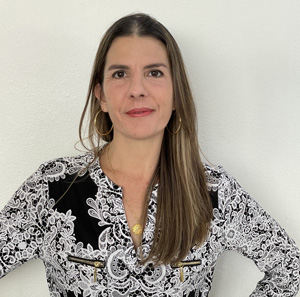Puerto Rico Manufacturing Extension holds virtual symposium on population decline

Experts discuss solutions to address depopulation and attract the diaspora back to the island.
In response to the challenge of depopulation, the Puerto Rico Manufacturing Extension (PRiMEX) held a virtual symposium titled “Population Decline in Puerto Rico: A Multisectoral Challenge.” During the event, panelists discussed current challenges and possible solutions to encourage residents to stay and the diaspora to return.
The panel, moderated by Gloria Viscasillas, executive director of the Echar Pa’lante Foundation, featured Puerto Rico Chamber of Commerce (CofC) President Ramón Pérez-Blanco; economist and Estudios Técnicos Chairman José Joaquín Villamil; and Ana Laura Miranda, manager of the El Comeback program.
“The population decline in Puerto Rico is a reality that is directly affecting the economy,” said Ramón Vega-Alejandro, executive director of PRiMEX. “A recent study estimated that the island stopped receiving $1.2 billion in income due to the departure of over 600,000 people from 2008 to 2022. Retaining the existing population and attracting people to return is crucial to strengthening the economy and the manufacturing industry, which accounts for about 46% of the country’s income. This effort requires a multisectoral approach that encompasses both social and economic factors.”
Vega-Alejandro emphasized the importance of collaboration, stating, “We want to aspire to have a better country. I think everyone agrees that we want to aspire to [have] a better country.”
He highlighted Puerto Rico’s strengths, including its human capital, and stressed the need “to work together to achieve the same goal.” Retaining current residents and finding ways to bring back the diaspora are essential steps, he said.
Vega-Alejandro also pointed out the necessity of having good schools, adequate housing, health services and reliable public infrastructure to prevent outmigration and encourage returnees. A stronger, more reliable electrical system at affordable rates is another critical factor in retaining and attracting residents.
Villamil noted that Puerto Rico’s economy is slowing down and pointed out the increasing number of retirees returning to the workforce.
“Of the people that aggregated to the workforce, the biggest group are retired people that returned to work. That has many social implications in terms of the flexibility in the labor force,” Villamil said. “These are things that have to be studied further.”
“Inflation in Puerto Rico until 2023 was much higher than the increase in the average salary,” Villamil said. “That is discouraging for people who are working. This changed in the middle of 2023 for various reasons, including the increase in the minimum wage and the Earned Income Tax Credit. The increase in the minimum wage … surpassed inflation. If that stays, that would be stupendous.”
Viscasillas and the panel discussed several alternatives for the private and public sectors to focus on to prevent people from leaving the island and to encourage those who have left to return.
Miranda highlighted housing as a significant factor that needs to be addressed.
“When we started the Comeback, everyone said we need talent, we need talent,” Miranda said. “Now I have more people looking for jobs than job opportunities. One of the concerns is housing. Recently, I spoke with [developer] Agustín Rojo about where all these people are going to live when they return or people looking for homes to raise their families.”











